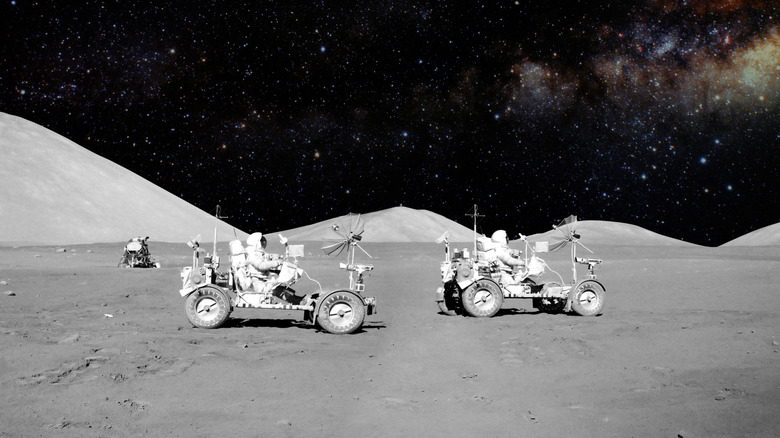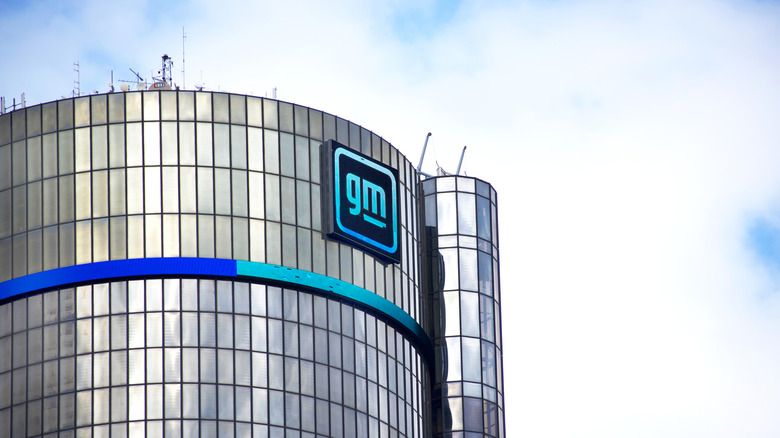How GM Is Getting Back Into The Space Race
General Motors first reached the moon in 1971 (via CNN). At least, it's technology did. And unlike the astronauts who first set foot there, GM never left. Not in the physical sense, anyway. Three Lunar Roving Vehicles crafted by GM and Boeing in the 1960s, and flown to the moon in the early 1970s, still sit on the moon's surface. Aptly named LRV-1, LRV-2, and LRV-3, the vehicles were used in the Apollo missions to explore the lunar surface beyond where the astronauts were able to walk – bounce? – on the power of their own two feet.
The astronauts of Apollo 17 parked the vehicles for good in 1972, heading back to Earth in what would mark the final manned flight to the moon of that era (via RMG). NASA has announced new ambitions to send humans back to the moon with the goal of exploring further beyond where we have set foot before, venturing as far as the moon's south pole and exploring during the "lunar night," MotorTrend reports.
GM will make its triumphant return to the space race on these forthcoming missions. The company has teamed up with Lockheed Martin to produce new ultra-modern lunar rovers for NASA's upcoming trips to the moon, according to Motor Trend.
GM and Lockheed Martin to build high-tech rovers
Rather than relying on the outdated technology used on the original moon rovers from those early moon missions, the new buggies will be highly upgraded. These buggies will feature a technology familiar to some owners of Earth-bound GM vehicles –- namely, the Ultium EV tech used in the new electric GMC Hummer and Chevrolet Silverado.
It is expected that these newer moon buggies will drive faster with this next-generation technology in play. While astronaut Eugene Cernan maxed out his buggy at 11 mph during the Apollo 17 mission, these new buggies are expected to reach closer to normal car speeds, per CNN. The rovers will be charged by solar panels during the two-week-long periods of sunlight experienced during a "day" on the moon. GM and Lockheed Martin hope the rovers will be able to harbor enough energy to then last through two weeks of darkness.
But the biggest technological jump between the original dune buggies and the modern version stems from the lack of a need for a human pilot. Because the plan for these rovers is that they'll be autonomous, they are expected to be able to operate during non-manned missions as well as manned missions. These vehicles are also expected to help support the first scientific missions to the moon's south pole.
GM and Lockheed Martin are developing the most high-tech remote-controlled cars to ever drive on the moon. Which could lead to some seriously fun jump sessions in the moon's low-gravity environment.

